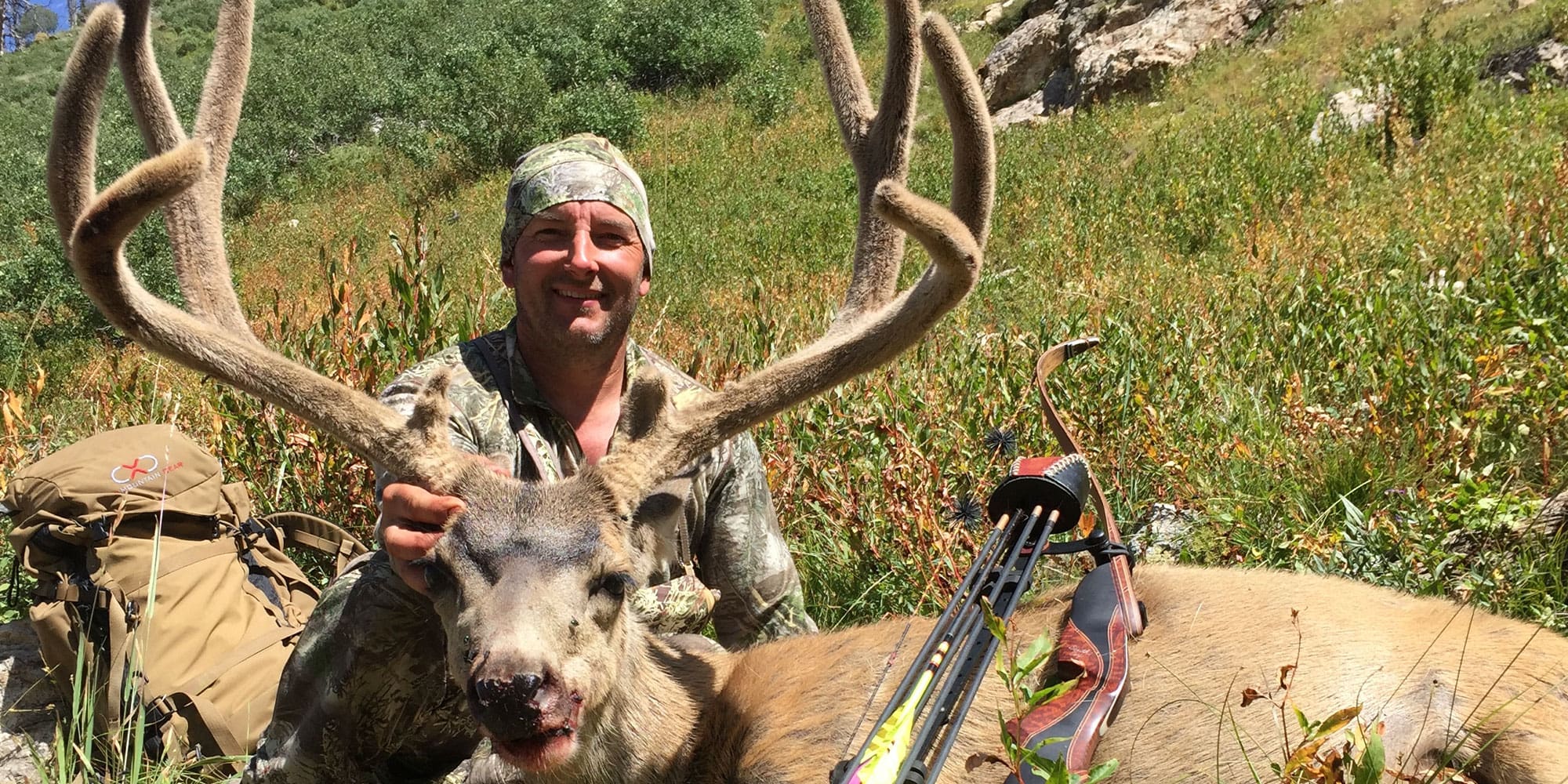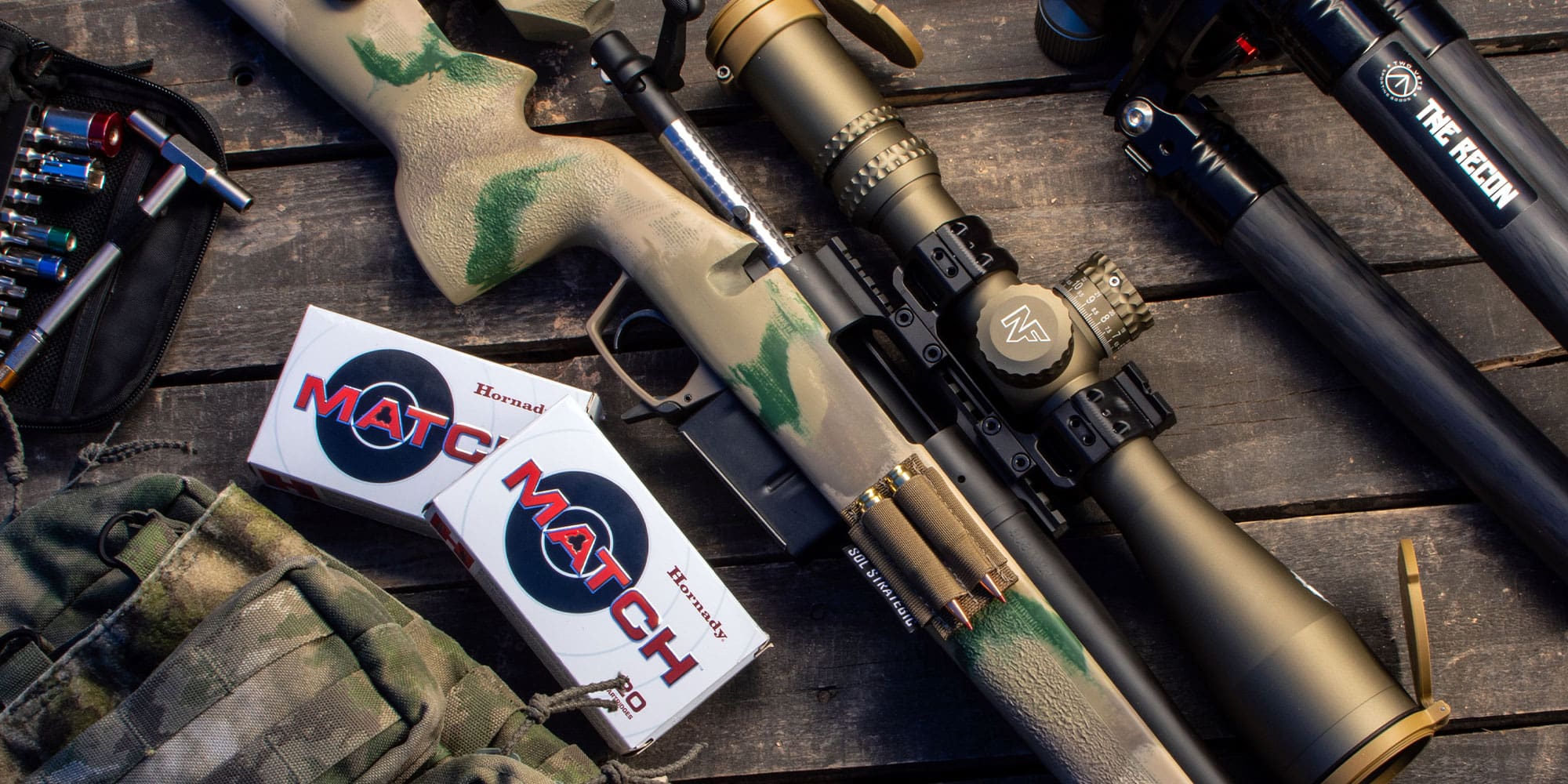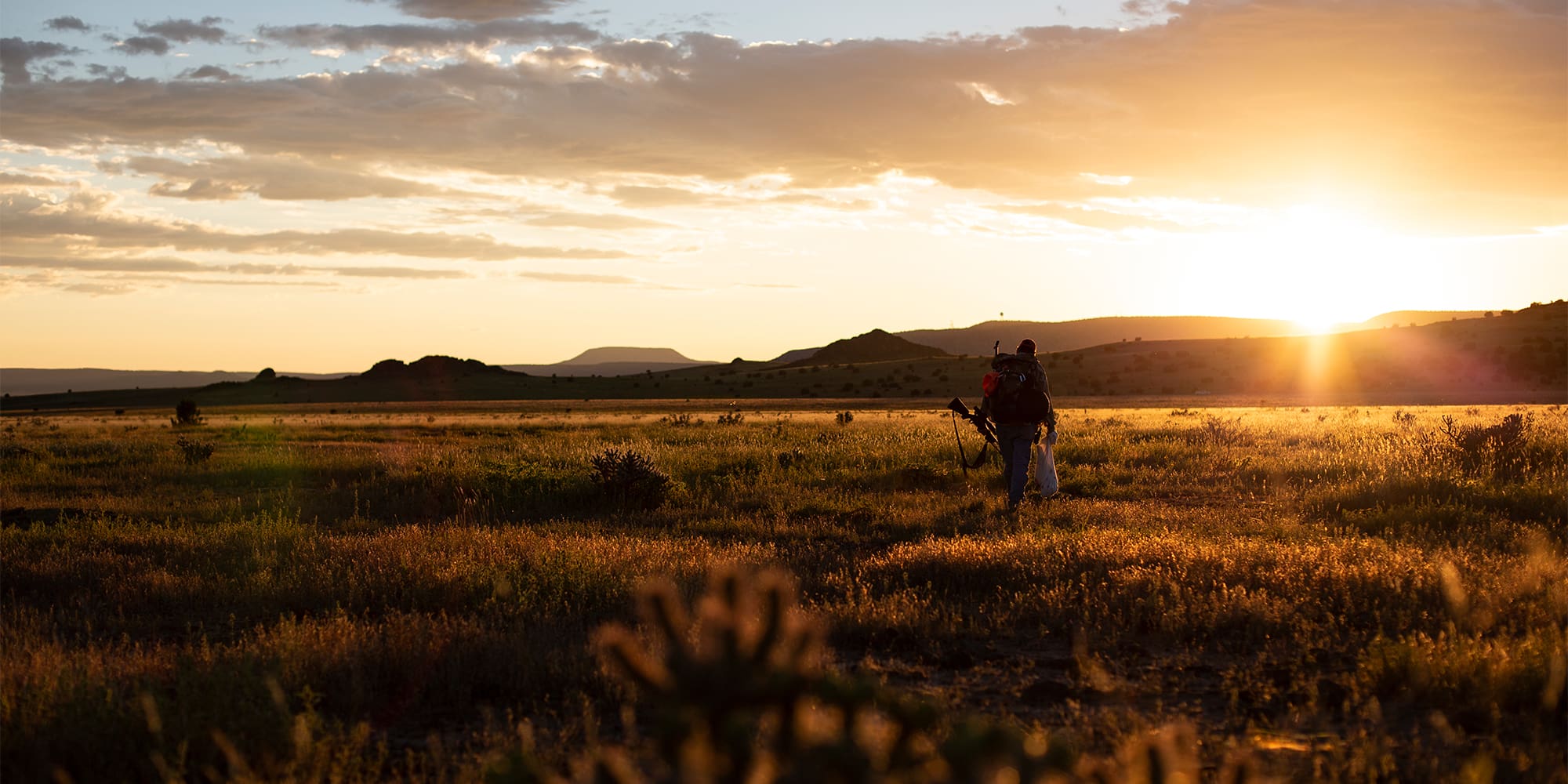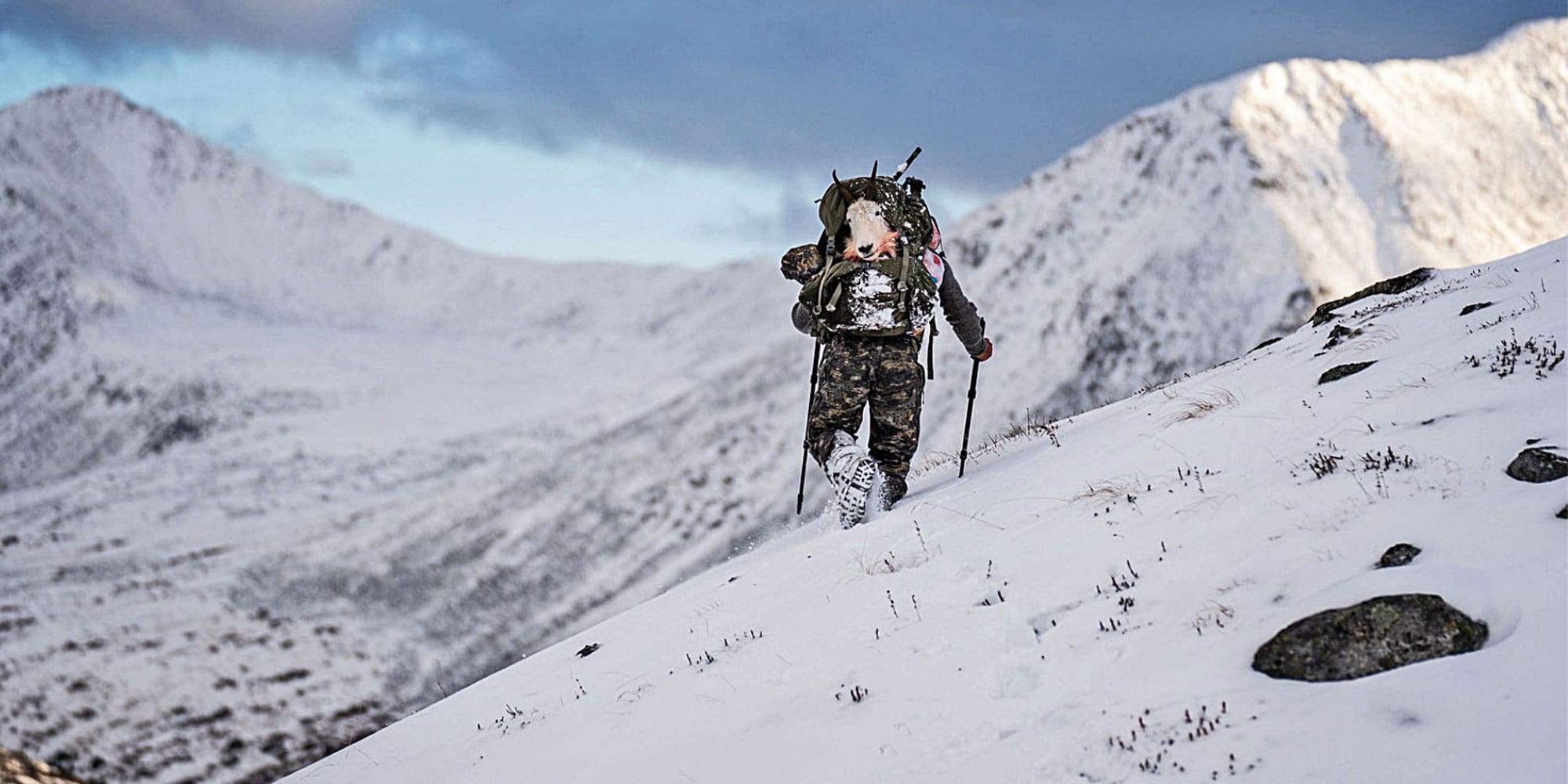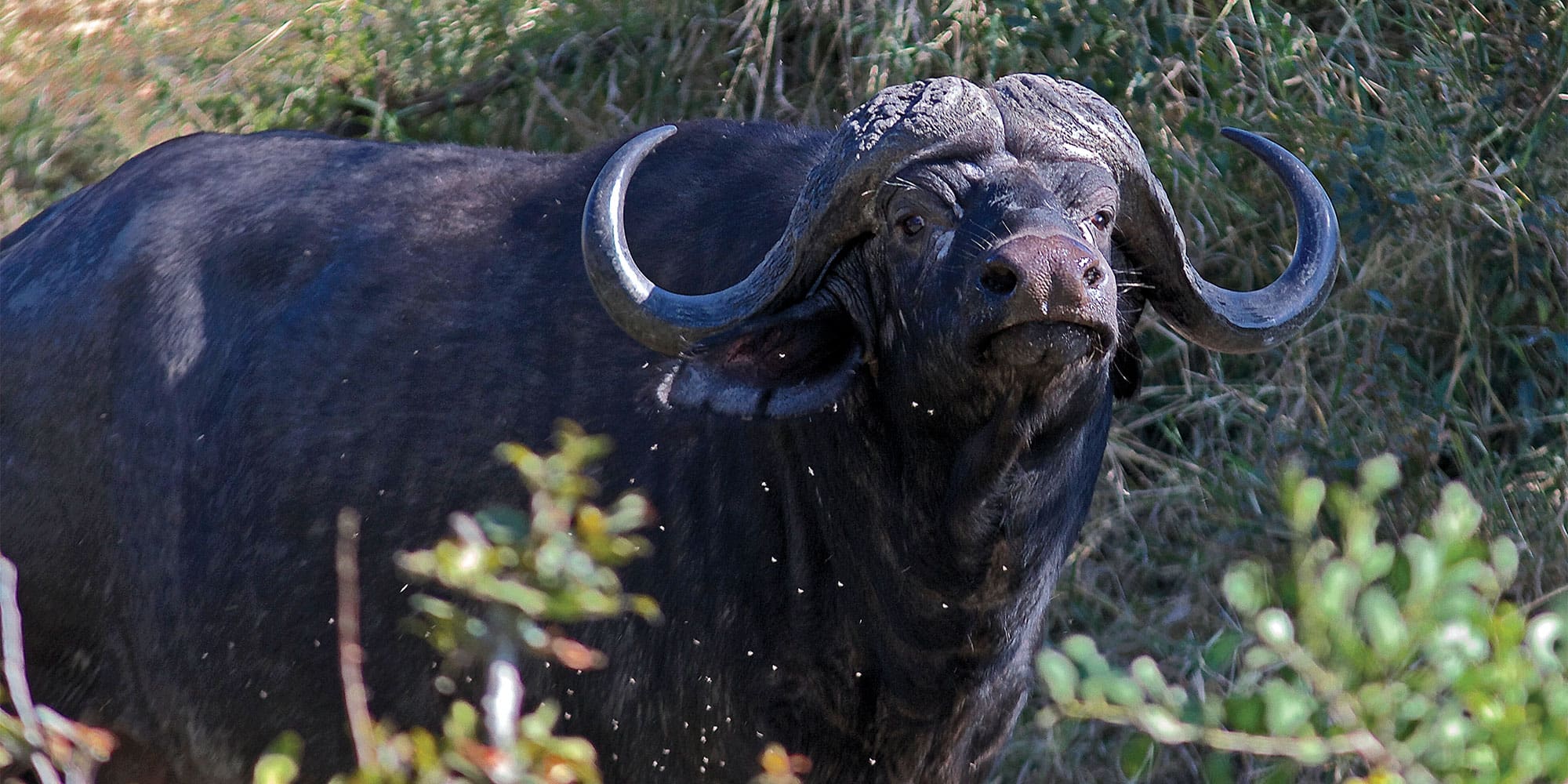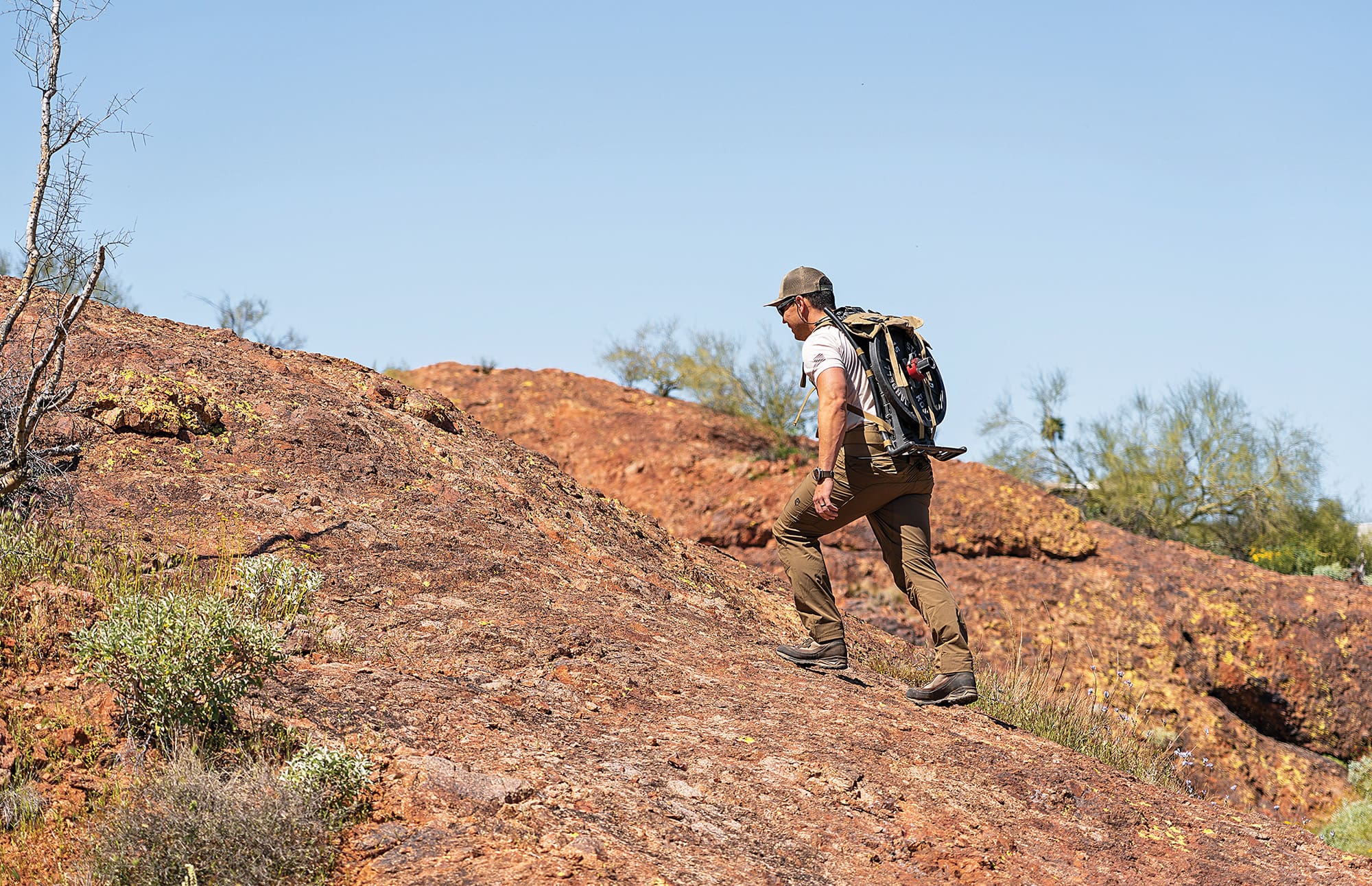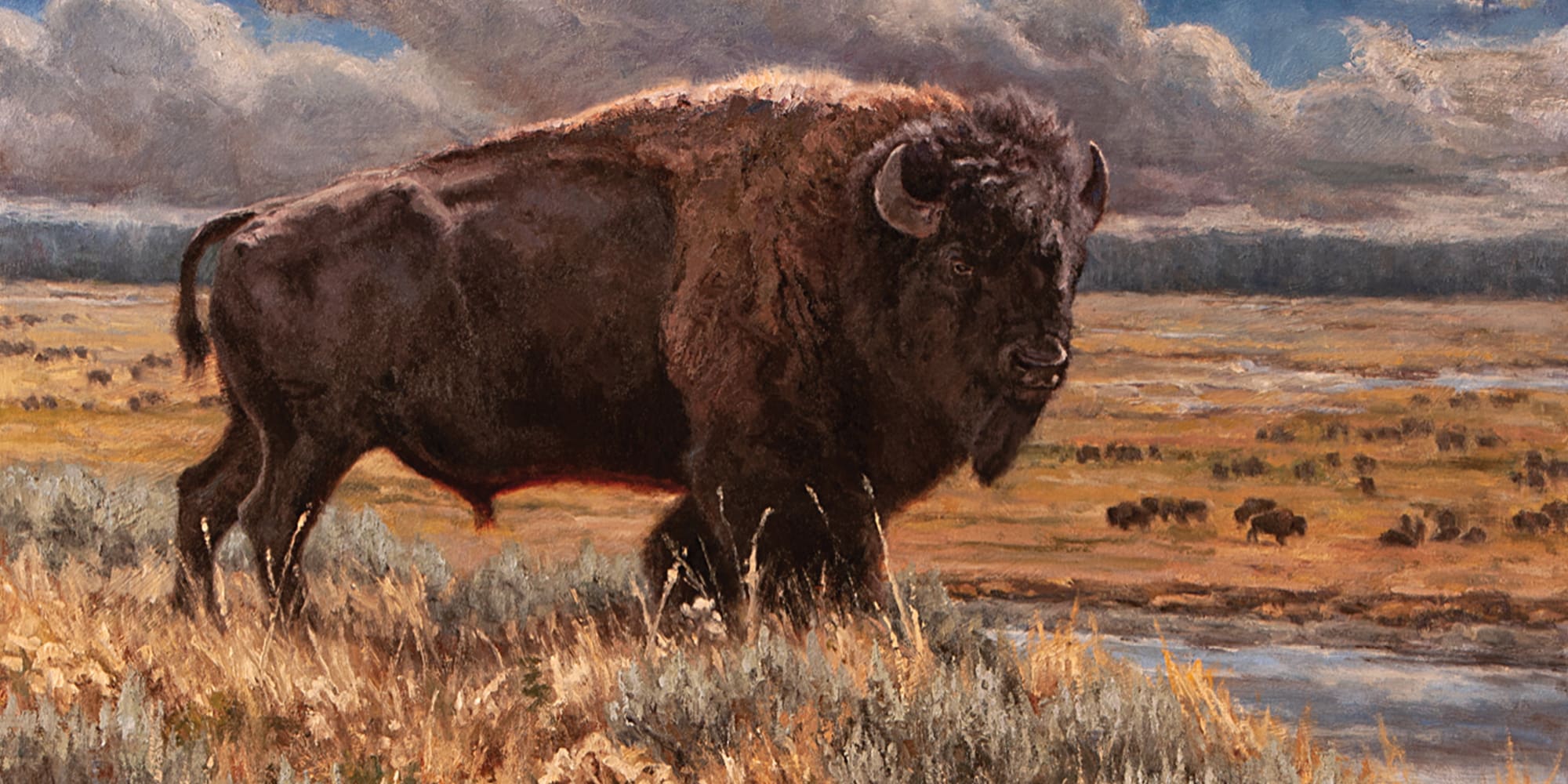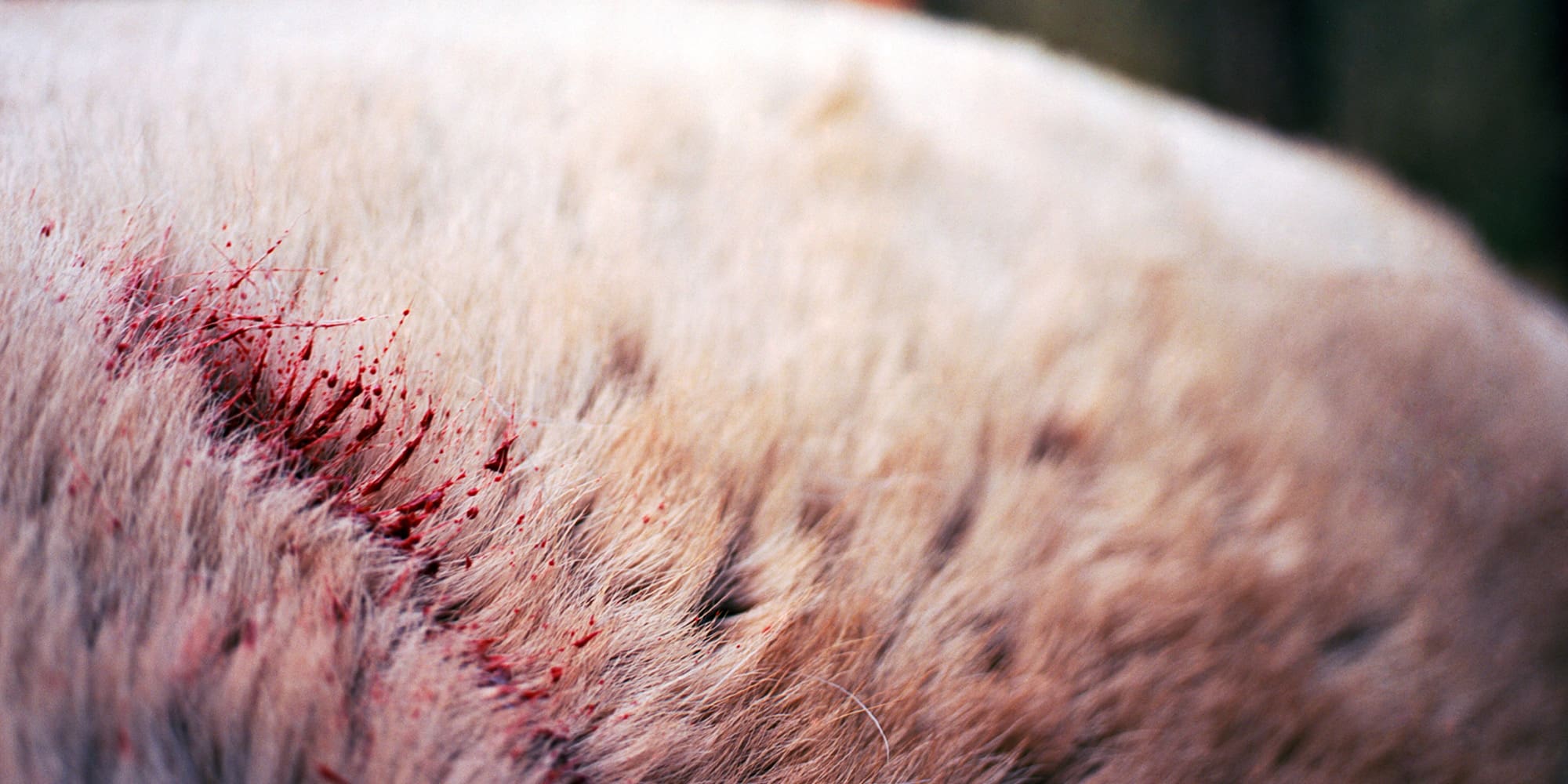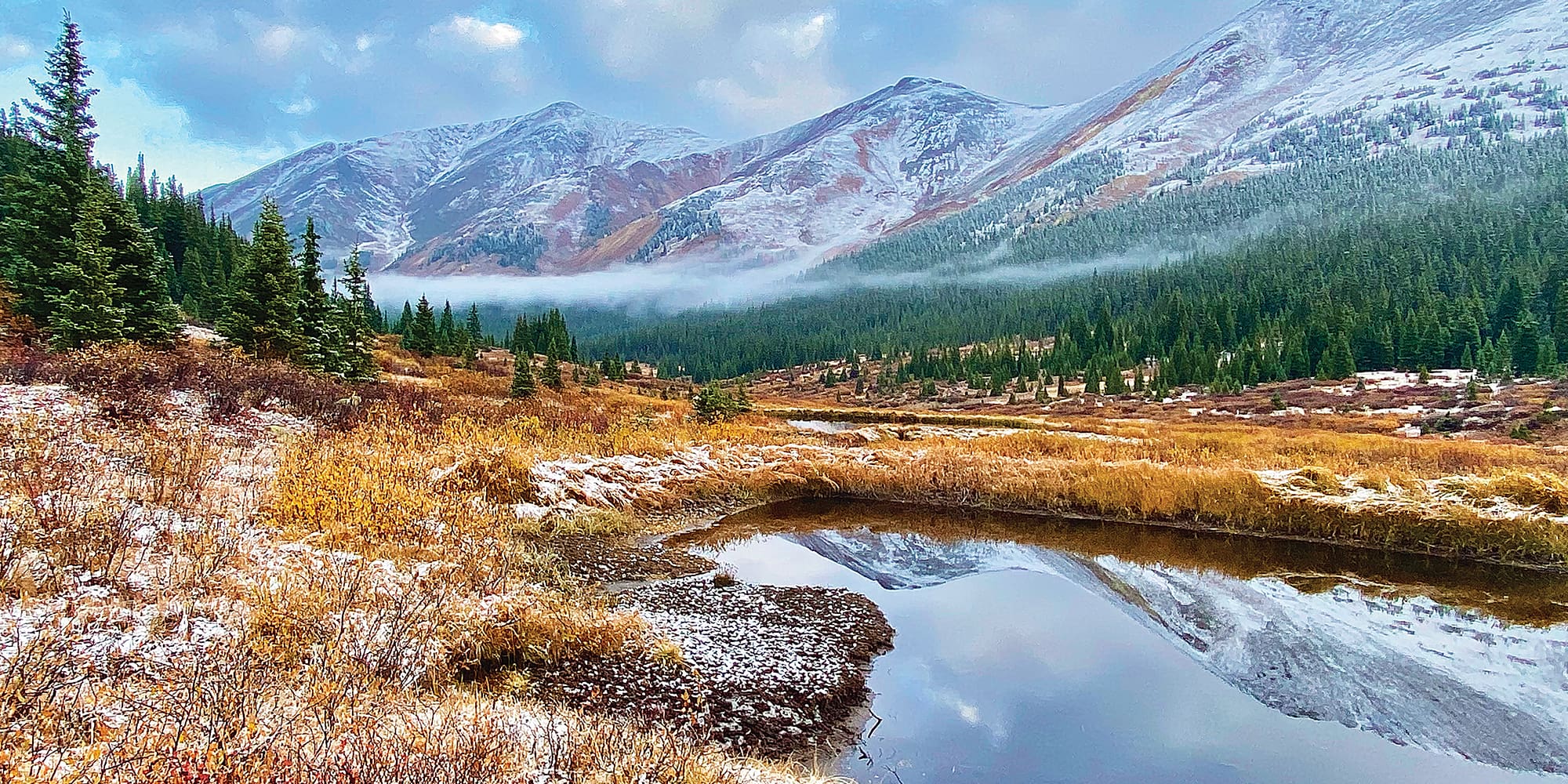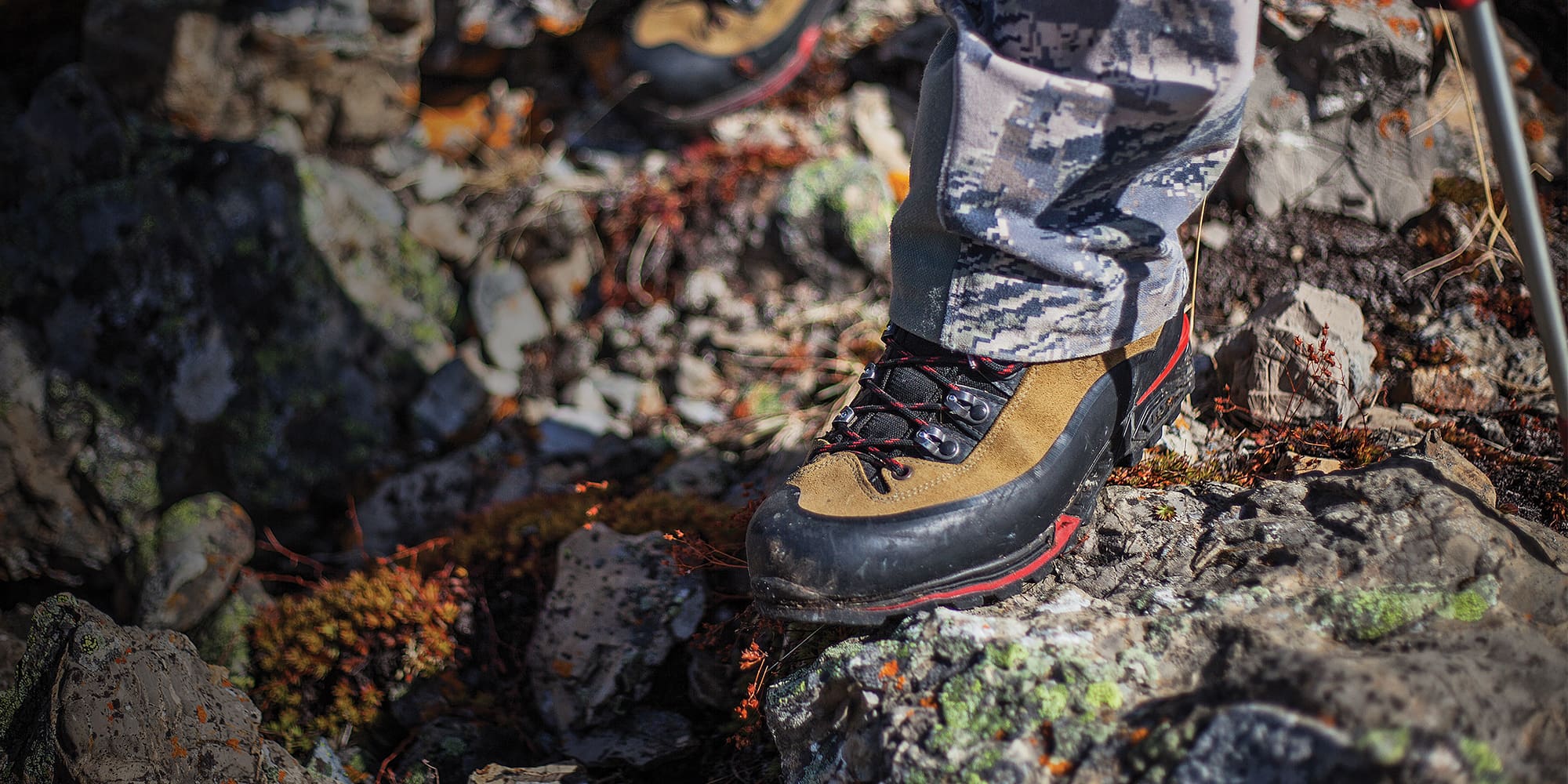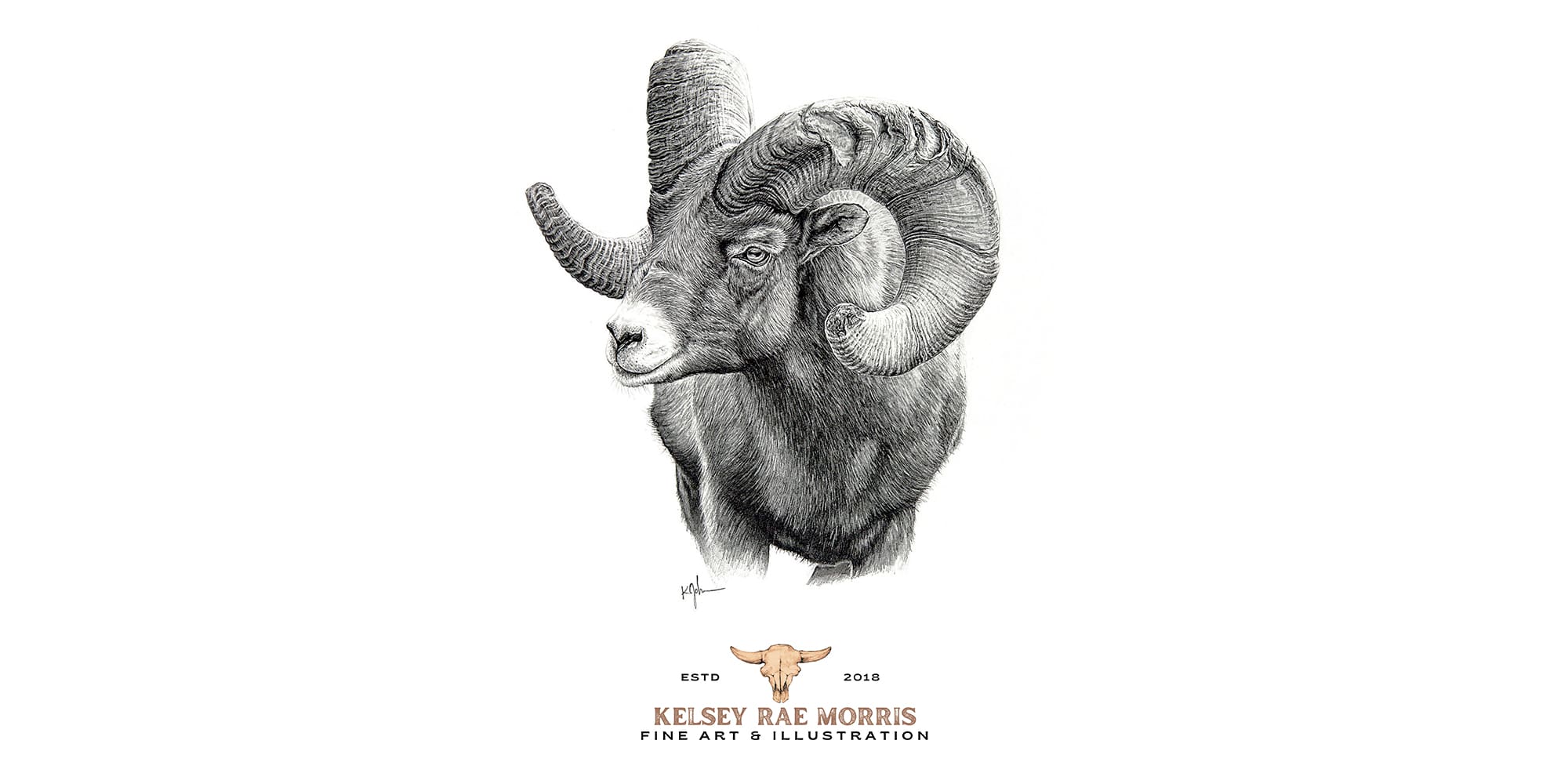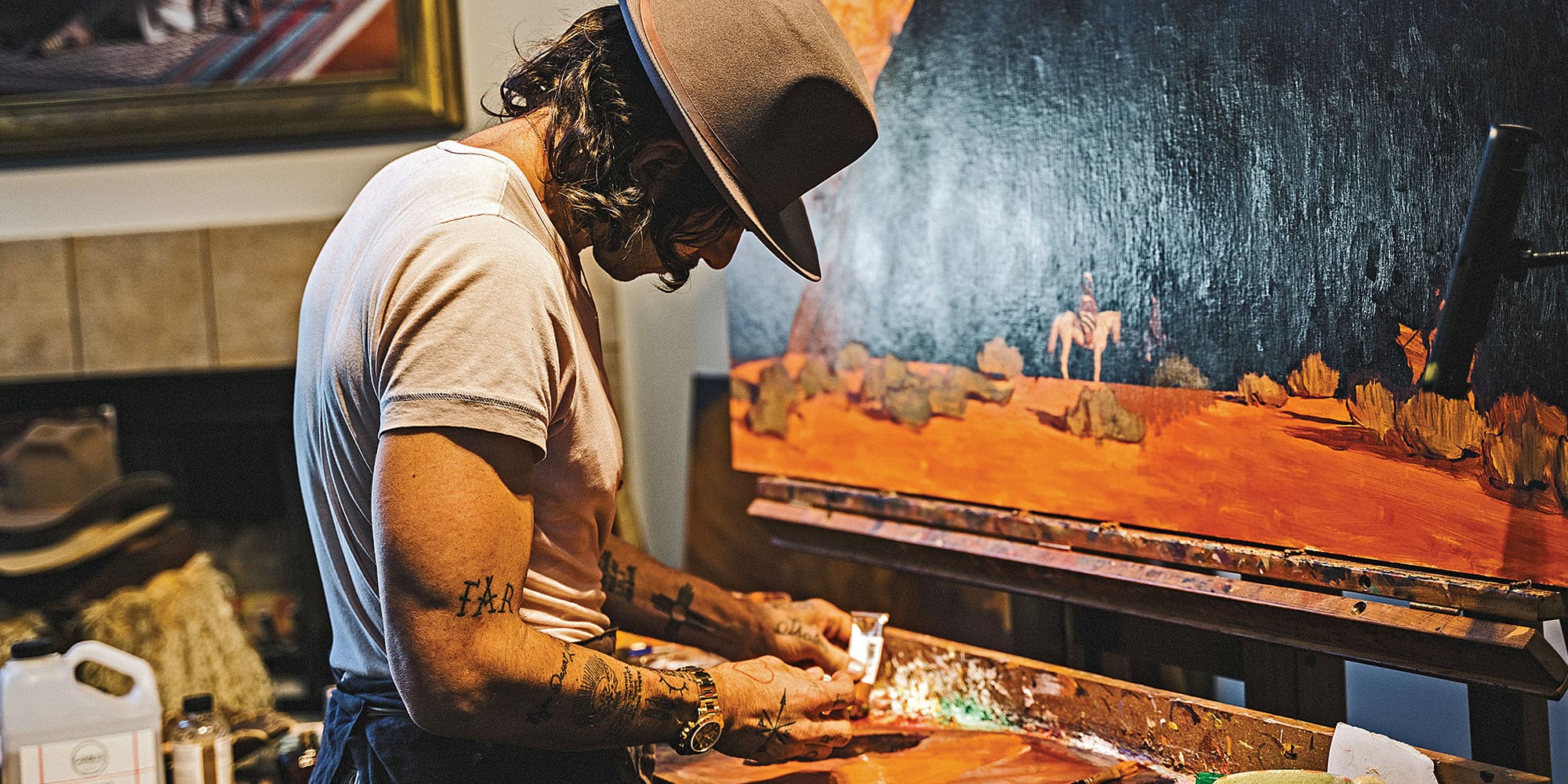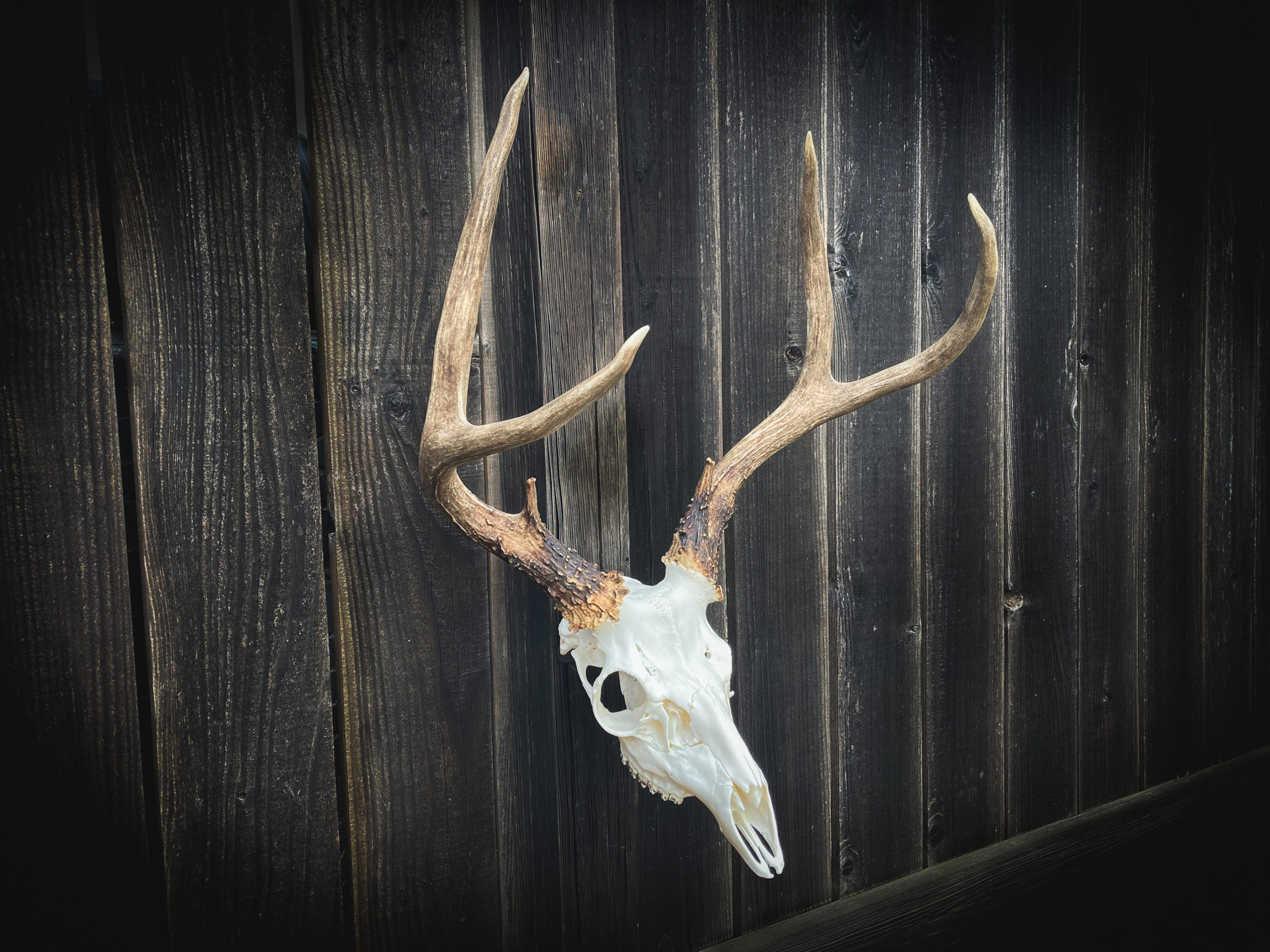
NOTICE: Certain links on this post may earn a commission for Western Hunter Magazine from Amazon or our other affiliate partners when you make a purchase. Thank you for your support.
How to DIY Euro Mount Like a Pro
As hunters, we put a ton of time and effort into our hunts to give ourselves the best chances of success. Scouting, gear, meat care, and logistics among many other things come to mind when planning a hunting trip. One thing often overlooked however is trophy care, and what they are going to do with the animal when successful. There are many options when it comes to preserving your trophy and some consideration should be taken as to how to best care for your trophy before heading into the field. One of my favorite ways to preserve a trophy is with a European mount. A properly cleaned skull offers a very affordable and visually attractive option for most hunters. For DIY guys, a quality DIY Euro mount can be achieved fairly easily with a few key practices in mind.
Head Removal & Skinning
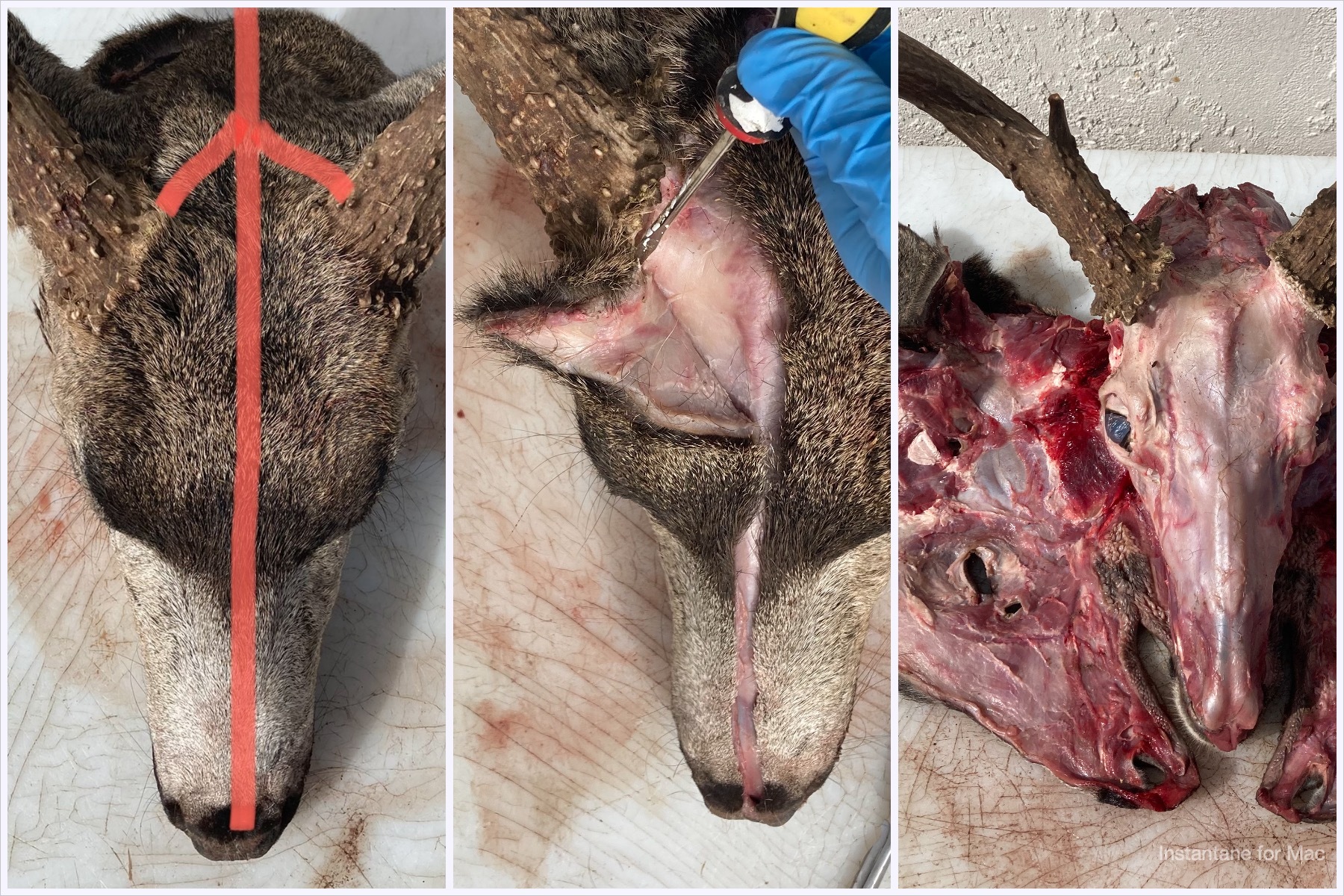
If you happen to find yourself successful on your next hunting endeavor and want to preserve your trophy by Euro mounting it, the work starts when the animal hits the ground. As someone who does quite a few Euro mounts one thing I see quite often is neck meat and vertebrae still attached to the skull when hunters bring them to me. Do yourself or your taxidermist a favor and remove the skull at the last vertebrae (atlas joint) where the base of the skull attaches to the neck. You will waste less meat and streamline the skull cleaning process if you remove the head at this point.
If you are hunting in your home state and don’t need to skin/clean the skull to cross state lines, it’s always best to leave the hide on your skull. Leaving the hide on ensures that no meat will dry and dehydrate the skull which can create issues during whitening later in the process. If you are in a situation where you have to prep your skull according to state fish and game laws for transport across state lines, there are a few ways to go about it. First, remove the hide from the head. I prefer a replaceable scalpel blade knife for doing this. Start the incision from the back of the head/neck area and run the spine of the knife blade across the top of the skull, between the eyes all the way down to the snout. Make sure to keep the edge of the knife blade pointed away from the bone at all times when working on your skull. This will prevent unwanted knife marks in the bone which will be visible on your finished euro mount. If the skull you are cleaning has antlers it's best to use a flat head screwdriver to pry the hide from around the antler burs. The screwdriver will keep you from scoring the bone with your knife around the top of the skull, leaving unsightly marks on the finished mount.
Work the hide off the skull down each side, around the eyes, and tear ducts. Cut the ears off at the base of the skull and proceed toward the bottom jaw. Take special care around the nose to not remove any bone or cartilage with the knife.
Remove the Lower Jaw & Eyes
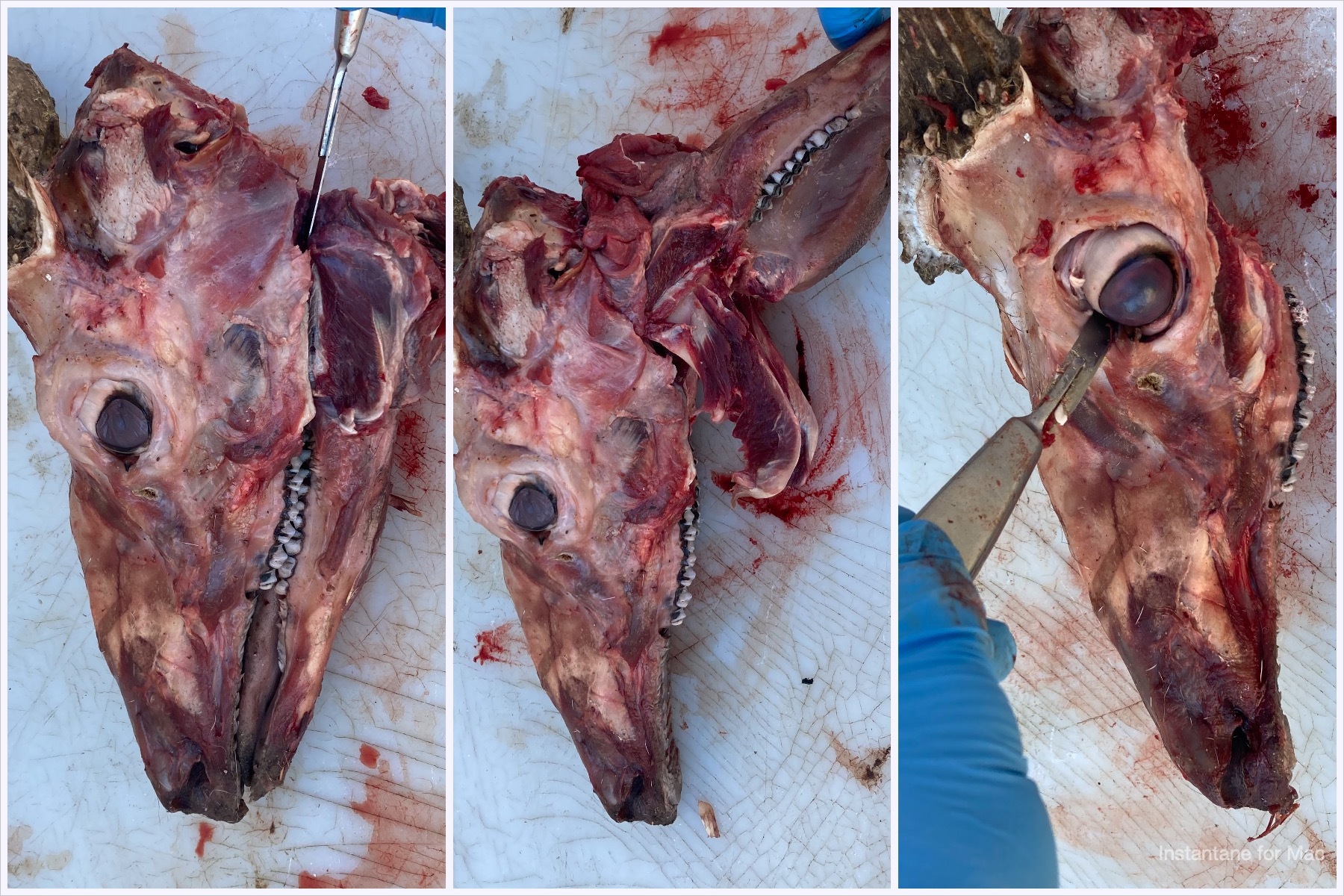
Once you’ve removed all of the hide from the skull, it’s time to remove the lower jaw. I like to make two incisions: one along the outside of the jaw bone from the back of the jaw toward the mouth. This cut on both sides of the skull will free up the muscle holding the jaw bone in place. Next, grab the snout in one hand and the lower jaw in the other, open the mouth and continue to open until the lower jaw hyperextends to the back of the head and detaches itself. Use your knife and cut the lower jaw free as it will only be attached by a small amount of muscle and connective tissue.
Once the lower jaw is removed you can move on to removing the eyes. Using your knife, make an incision around the entire circumference of the eyeball, freeing up all of the connective tissue around the eye. Next, flip the skull upside down and insert your knife into the back of the eye socket between the skull and orbital bone. Cut the remainder of the connective tissue behind the eye. Now you can simply pull the eye from the eye socket and cut it free with very little resistance.
Once the eyes are removed use your knife and remove as much meat from the outside of the skull as possible. The less meat on the skull, the quicker the cleaning process will go.
Brain Removal
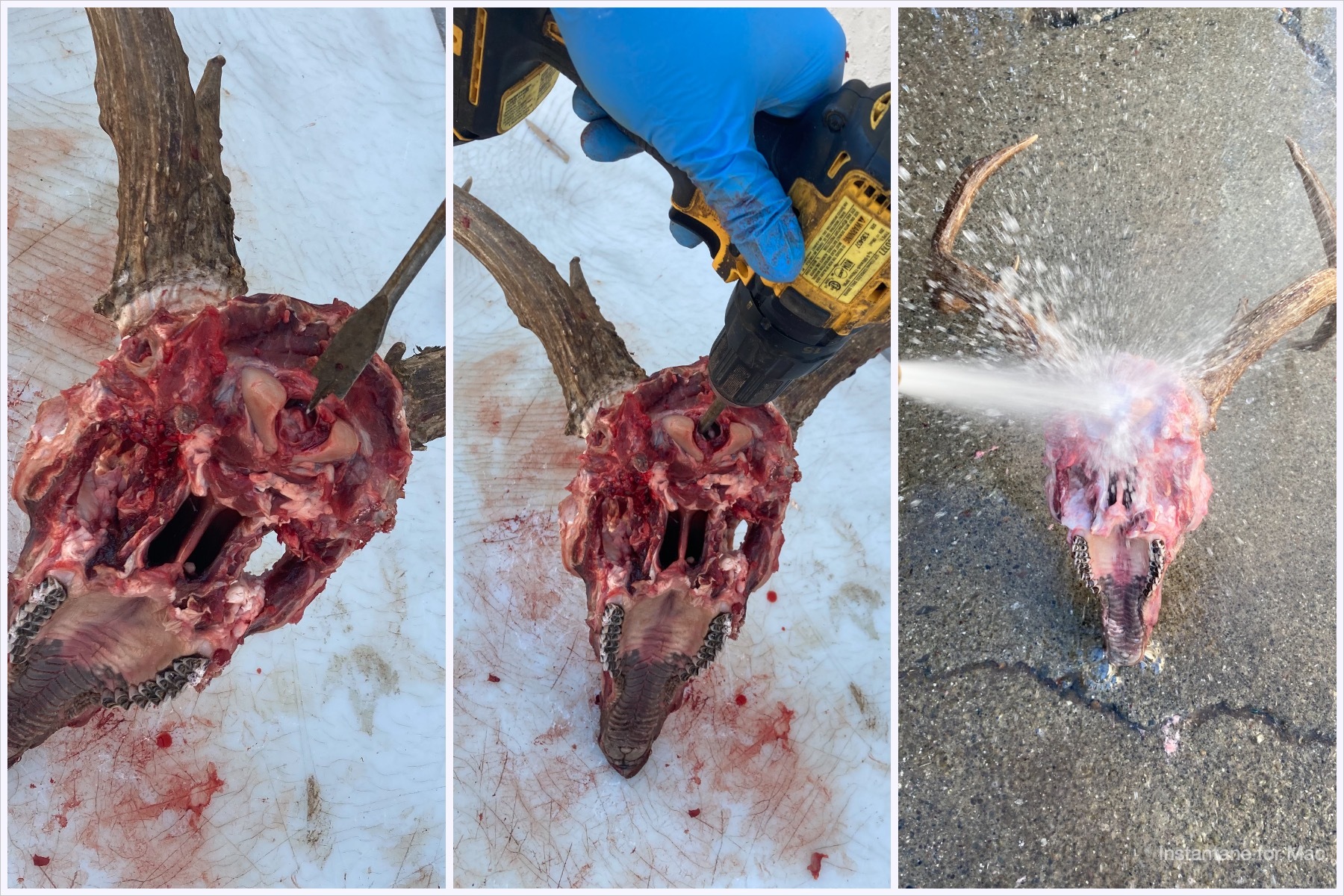
Last on the list for prepping your skull for transport or the next steps in the Euro process is removing the brain. I like to do this with a drill and a 5/8” flat spade wood bit. Insert the drill bit into the hole on the back of the skull at the atlas joint where the last vertebrae were connected. Pull the trigger and scramble the brains inside the skull until they are in liquid form. You can also achieve the same thing with a screwdriver or strong stick. The objective is to liquify the brains in the skull so they can be removed with a pressure washer or water hose. Once the brains are ready to be removed just stand back a few feet and insert the hose into the same hole you used to scramble the brains. Spray water into the skull until all brain matter has been removed and rinse thoroughly. If you're in the field trying to complete this process and don’t have access to a water hose, you may have to find a self-service car wash and use the pressure washer to complete the last step before heading back across state lines.
The Maceration Process
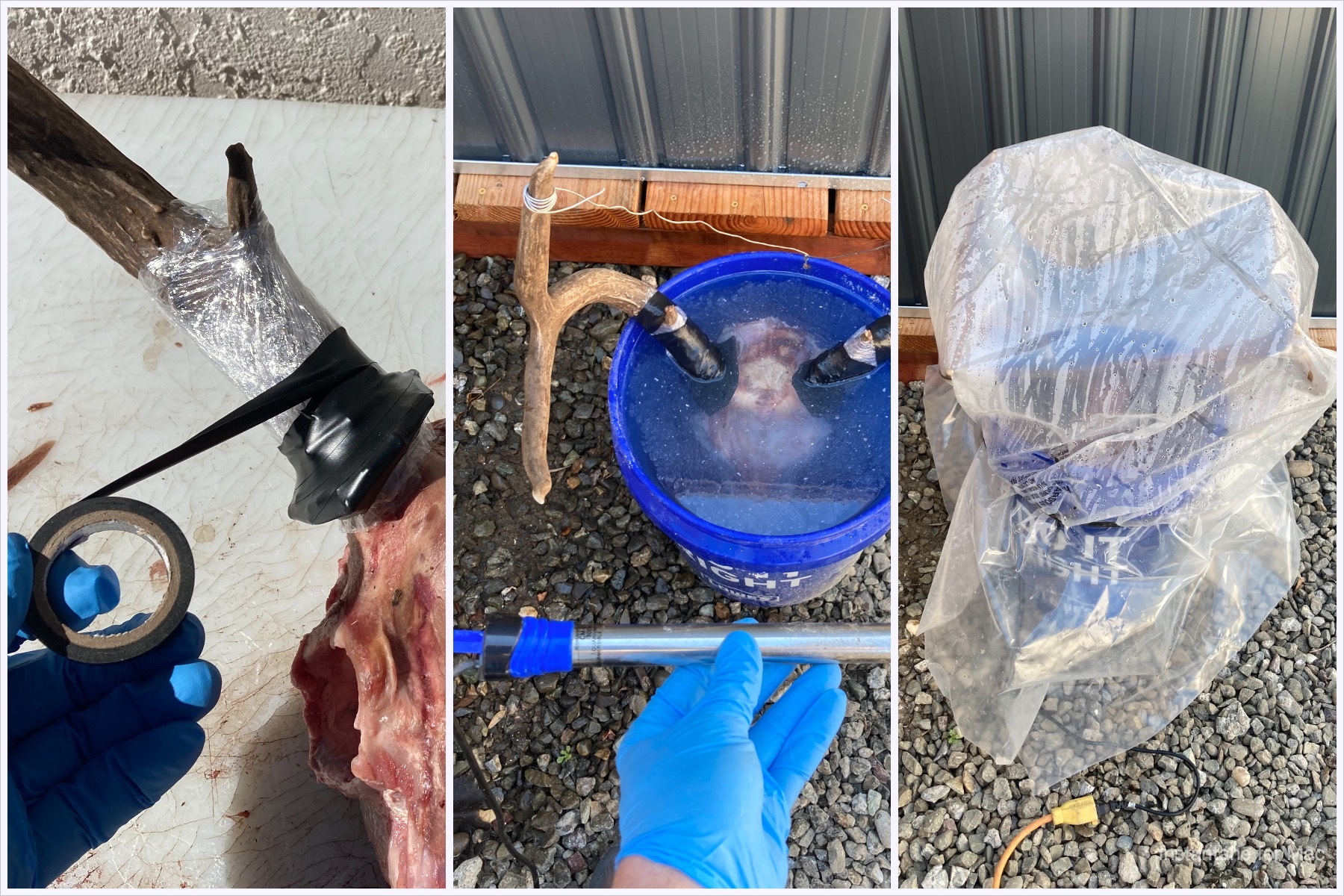
At this point, your skull is completely free of hide, meat, eyes, lower jaw, spinal fluid, brain matter and can now be transported back home, or begin the Euro process if you’re already at home by this point.
There are a few different ways to go about cleaning skulls, but my preferred method is called maceration. Macerating bones is done by soaking in water at a sustained temperature of 80-90 degrees Fahrenheit for optimal bacteria growth. By essentially slow cooking the bones at sustained temperature it allows you to save all the small intricate bones that are sometimes lost during other methods of skull cleaning such as boiling.
To start the process of maceration you’re going to need a few supplies, listed below.
A water-tight plastic container to place the skull in (a metal container will rust and discolor your skull). Make sure the container is large enough to completely submerge the skull with water.
A stainless steel fish tank heater to maintain water temps to promote optimal bacteria growth, that can be set for at least 80F.
Plastic wrap and electrical tape to protect the bases of the antlers. I prefer to wrap the antlers from the base near the skull up about 6 to 8” with clear plastic wrap, and then go over the plastic wrap with black electrical tape to create a water-tight seal. The plastic wrap and tape will prevent you from losing any antler color during the macerating process. If any antler color is lost it can be touched up with the Minwax wood stain.
Now it’s time to start the maceration process. Place your maceration container somewhere that animals can't get into it and the smell won't bother anyone, as it can become quite strong. Also, be mindful that you need to be able to run electricity to the container. Once you have a location picked out and your skull is prepped according to the steps above, it's time to set it in the container.
Place the skull in the container and fill it with water until it completely covers the skull. If your skull has antlers, fill about 1” above the antler burrs. Once you have the skull in the container and it's full of water, set your fish tank heater to 80F and submerge it in the container. Make sure the heater will remain completely submerged in the water to prevent it from overheating. If possible, place a lid on the container to help reduce evaporation and contain some of the smell. If a lid won't fit, you can pull a large plastic garbage bag over the container and wrap a bungee cord around it which will be better than nothing.
Now that your skull is in place and covered, go ahead and plug in your tank heater, and wait. For a deer-sized animal, the process usually takes four to six days. While your skull is macerating be sure to check the water level every two days and add water as necessary to ensure the skull stays submerged. After letting the process go for four to six days, you'll start to notice all the meat and connective tissue has rotted and is falling off the skull. Once you see roughly 90% of the meat has rotted off the skull, it’s time to pull it out and complete the euro process.
Remove your macerated skull from the water and give it a good rinse. Be careful around the teeth, nasal passages, and sinus bones as they will be soft and easy to damage at this point. A simple rinse with the garden hose will remove the remaining meat and tissue.
Skull Whitening
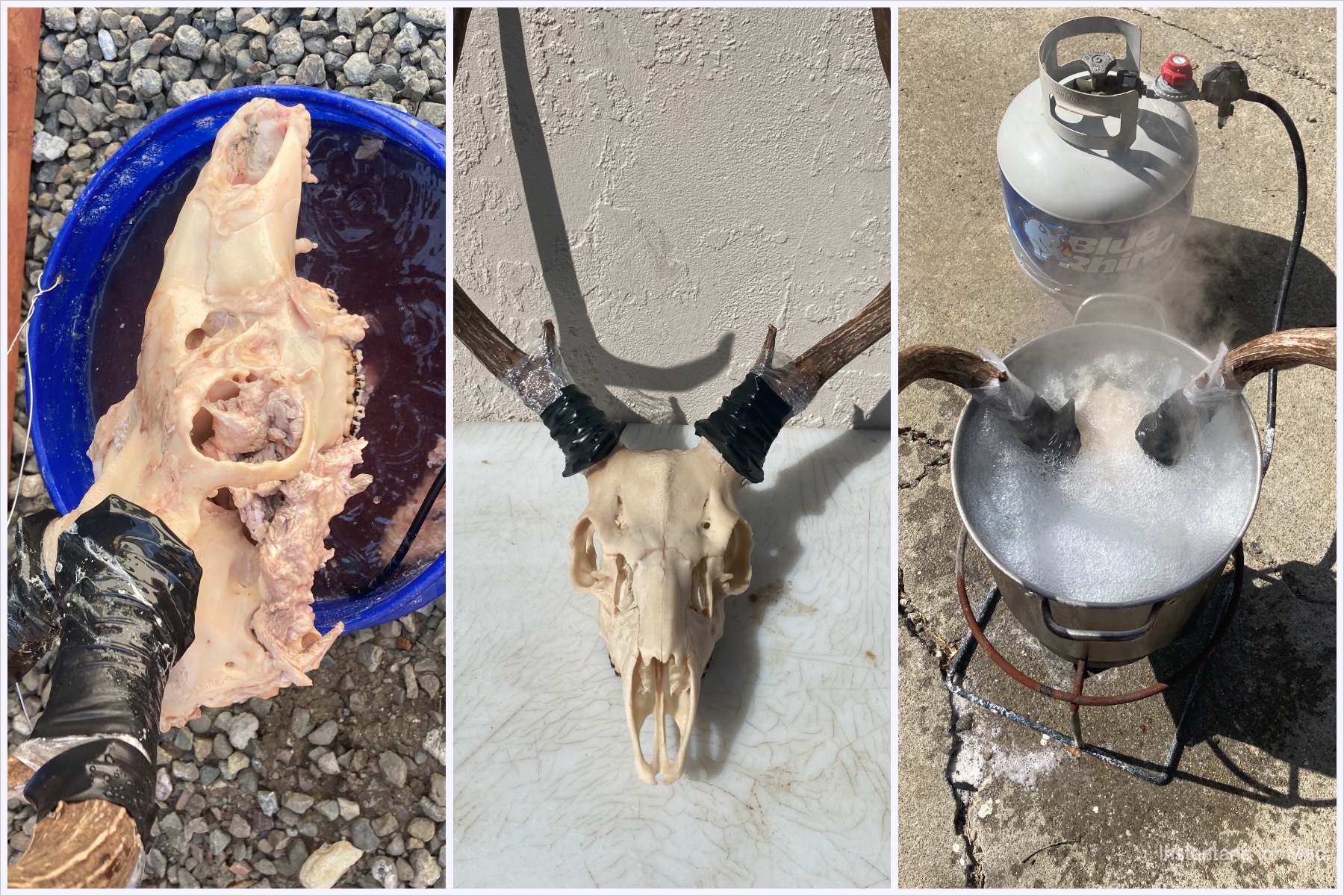
Now it's time to whiten your skull if you choose to do so. Some people prefer the look of clean, natural bone color. For the whitening process, you're going to need access to an outdoor burner such as a turkey fryer or high output BBQ burner. You're also going to need a pot large enough to fill with the whitening solution and completely cover the skull.
For the whitening solution, I prefer to use a mixture of hydrogen peroxide and water for my skulls. Regular 3% hydrogen peroxide from your local Walmart will get the job done just fine. Fill your pot 50 percent full with hydrogen peroxide, then place the skull inside, and next fill the rest of the pot with water until it completely covers the skull. Make sure that the antlers are still covered in tape and plastic so the whitening solution doesn’t come in contact with them.
Now that you have the appropriate amount of solution in the pot go ahead and pull the skull out. Bring the solution to a rolling boil and submerge the skull in the boiling solution for 5-10 minutes. Be sure that the solution never comes in contact with the uncovered part of antler as it will whiten anything it touches.
Between minutes 5-10, periodically remove the skull to make sure the solution has not deteriorated any of the bone and to check for desired color. Keep in mind the skull will whiten up further as it dries, so don’t be afraid if it doesn’t look as white as you wanted when it first comes out of the pot. Follow the same process for any teeth or nasal bones that may have fallen off during the maceration process.
Drying & Finishing Touches
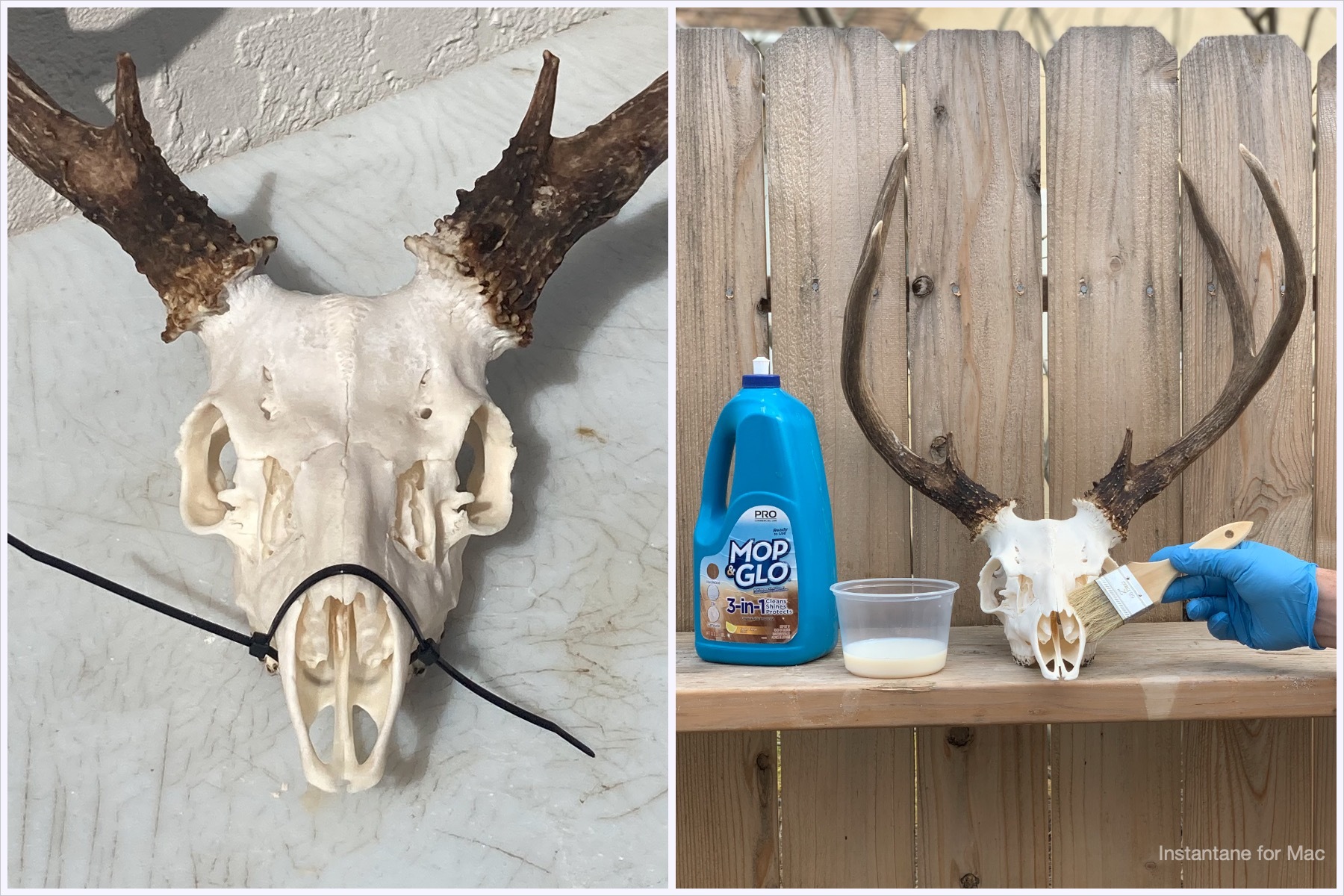
Once you have the skull and any loose pieces whitened, it's time for drying. Fit any nasal bones in place while the bone is still wet and secure in place with a rubber band. Oftentimes the nasal bones will separate as the skull dries so I place a rubber band around the snout to hold everything together. If possible, place the skull in direct sunlight for drying. If the weather isn’t cooperating and the sun isn’t available, the same thing can be achieved with a space heater. Place the skull in front of a space heater until completely dry and no bones feel loose.
At this point, your skull will be exceptionally clean and white. Once the skull is dry, go ahead and glue any teeth or nasal bones back in place that didn’t stick during the drying process. I use fast drying clear super glue for my skulls. Now that your skull is dry and completely put back together, it's time for the finish touches. Remove the plastic and tape from the bases. If any of the horn was whitened during the process, touch them up with Minwax provincial wood stain. I apply the stain very lightly with a Q-tip and repeat coats until the desired color is achieved. For the final touch, I prefer to coat my finished skulls with a thin layer of mop and glow from the cleaning supply aisle. The mop and glow gives the skull a pleasant smell and seals the bone to prevent dust or dirt from settling in the porous bone. If you’ve followed all of these steps, you now have a wall-worthy European mount to honor your trophy for a lifetime.
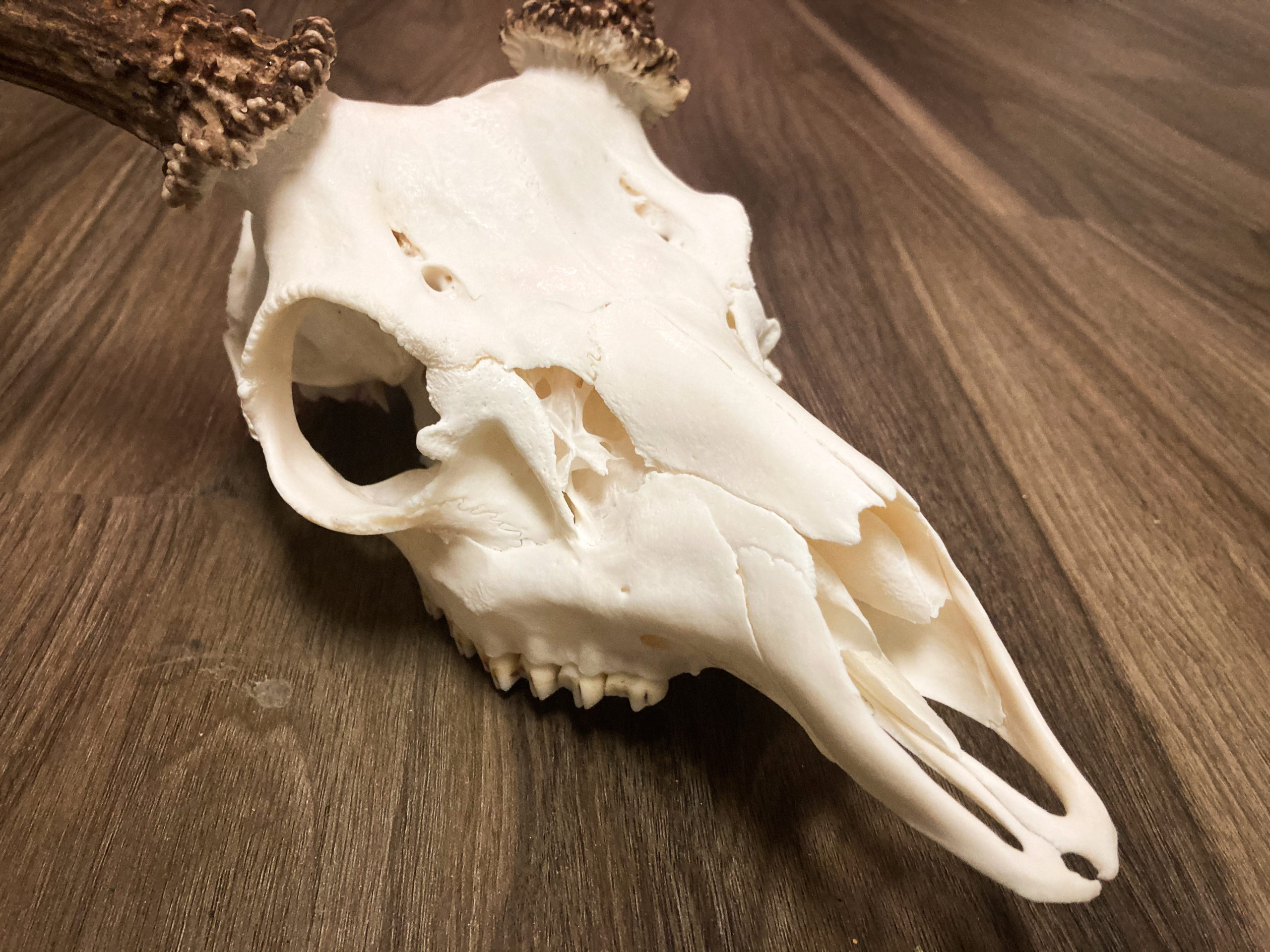
The author, Kyle Sibley, is the owner/operator of Sibley Skull Works. We can't thank him enough for sharing his secrets to producing Euro mounts of such astounding quality.


